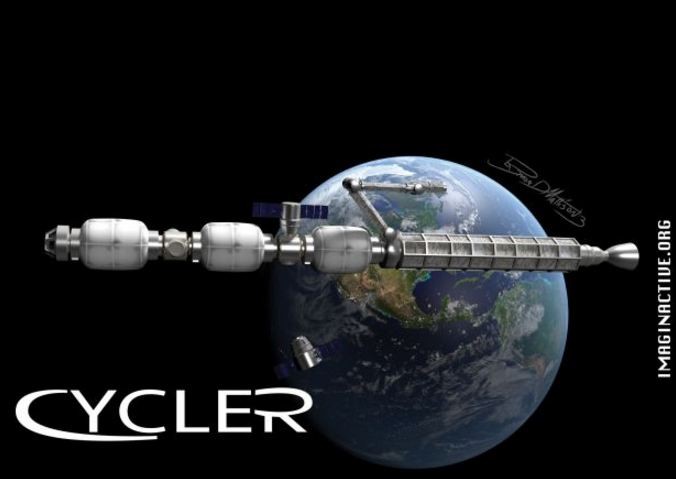Cycler, a future "space train" consisting of three inflatable modules housing humans, is set to take space tourists from the Earth to the Moon with passenger train-like predictability and efficiency.
A concept of Canadian Charles Bombardier, grandson of the man who invented the snowmobile, Cycler is a new iteration of Bombardier's original "Solar Express" space train concept Bombardier made public in August 2016.
Solar Express plans to become the fastest method of hauling large payloads of humans and cargo to anywhere in the solar system.
Once perfected, Solar Express should be capable of tearing through space at one percent the speed of light (93,000 kilometers per second), a feat not yet within the realm of any current technology.
If and when this vehicle does reach this speed, it will mean a journey to the Moon will take place in just over two hours; to Mars in 37 hours and to Neptune (the last planet in the solar system) in some 18 days.
As Bombardier explained on his website promoting his ideas, "Solar Express is a space train that would be designed and used to ferry humans, supplies and minerals between celestial bodies and space stations in our solar system. It would run non-stop, so smaller vessels would need to catch the train when it passed by."
Cycler is almost similar in concept but unlike Space Train will involve other companies to make it come to pass. It combines hardware from companies like Bigelow Aerospace, Masten Space Systems and SpaceX.
Bombardier and Ray Mattison created a design for a space train that will continuously cycle between the earth and the moon, hence the name "Cycler."
Bombardier explained that Cycler "is a novel spacecraft that would travel between Earth and the Moon to ferry people, supplies, and equipment to various moon bases. Once its reliability and safety are proven, it would be used on missions to asteroids, Phobos, and Mars."
Cycler consists of three inflatable segments, which are Bigelow Aerospace's inflatable B330 modules.
The modules are linked to become "space wagons." The first of these wagons provide space for sleeping quarters for a dozen space tourists. There's a lounge and dining area in the second wagon while the crew's quarters is in the third. A 100-foot section behind the Bigelow modules is a cargo bay.



























